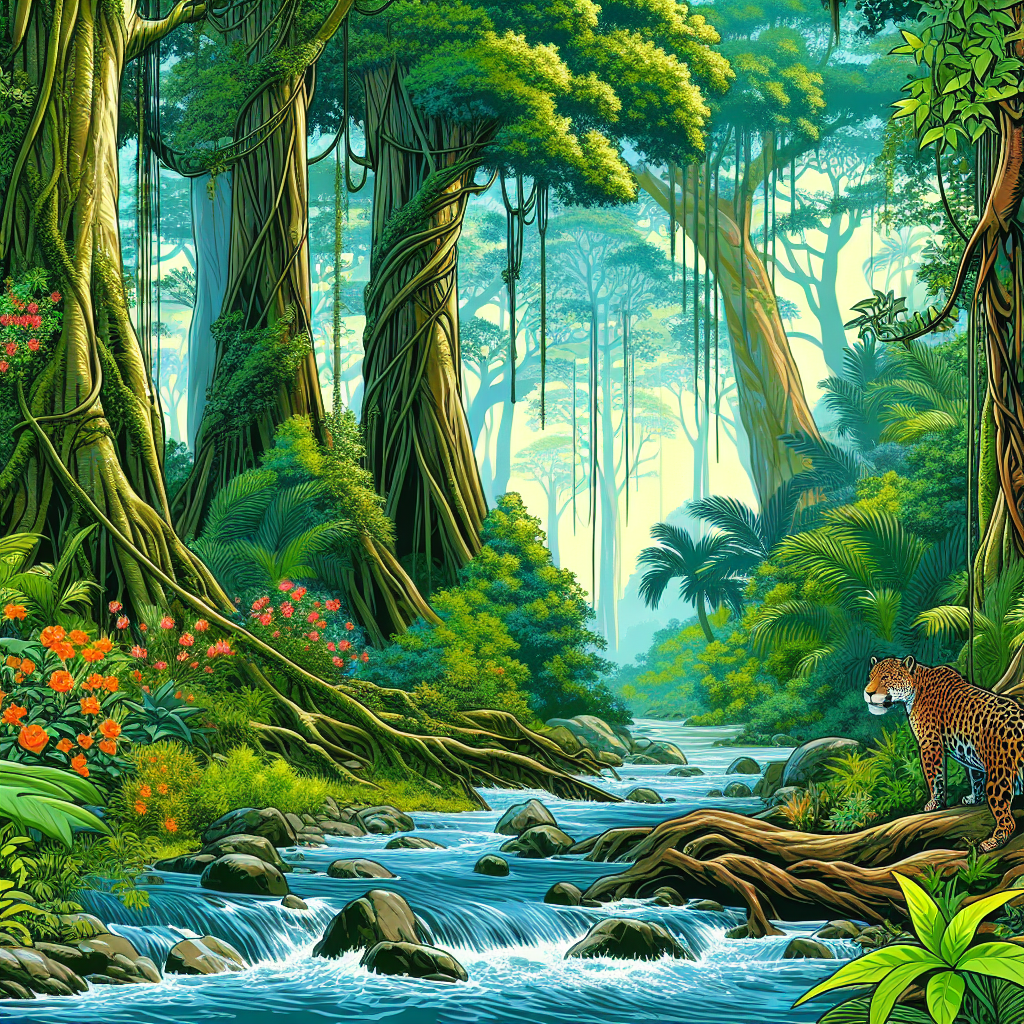Reforestation Efforts in Mexico: Enhancing Jaguar Habitats
Overview of Jaguar Habitats in Mexico
Mexico is home to a diverse range of ecosystems, each teeming with wildlife, including the elusive jaguar (Panthera onca). These magnificent creatures primarily inhabit tropical rainforests, swamps, and semi-arid regions. However, jaguar populations have been steadily declining due to habitat loss, poaching, and human-wildlife conflict. The protection and enhancement of their habitats are crucial for their survival. Reforestation initiatives in Mexico, particularly in areas like the Selva Lacandona and the Maya Forest, play a vital role in restoring these critical ecosystems.
The Importance of Reforestation
Reforestation provides a multitude of ecological benefits that are essential for jaguar persistence. Restoring tree cover not only enhances habitat quality but also improves biodiversity, creates corridors for wildlife movement, and mitigates the effects of climate change. These efforts have been increasingly recognized as integral components of conservation strategies aimed at supporting jaguar populations and other endangered species.
-
Restoration of Biodiversity
Reforestation leads to the revival of native flora and fauna. The restoration of species-rich habitats increases food availability for jaguars, including prey such as deer, peccaries, and rodents. Diverse habitats are more resilient to diseases and can better withstand environmental stresses. -
Wildlife Corridors
Establishing connectivity between fragmented habitats is crucial for species like the jaguar that require large territories for hunting. Reforestation projects help create wildlife corridors, allowing jaguars to navigate between different forest patches without the danger of crossing human-dominated landscapes. - Climate Mitigation
Forests act as carbon sinks, absorbing significant amounts of CO2. Reforestation contributes to climate regulation, which is important for the overall health of ecosystems where jaguars live. Healthy forests can help combat the extreme weather patterns that affect wildlife habitats.
Successful Reforestation Projects in Mexico
Several organizations and initiatives are leading the charge in reforestation efforts across Mexico. Some noteworthy projects include:
-
The Jaguar Corridor Initiative
The Jaguar Corridor Initiative is a collaborative effort involving multiple countries in Central America and Mexico, aiming to create a network of protected areas that ensure connectivity for jaguar populations. Reforestation efforts in key areas like the Maya Forest involve planting native tree species that are critical for the ecosystem. -
Selva Lacandona Restoration
In the Selva Lacandona region of Chiapas, various NGOs work with local communities to restore degraded areas by planting native trees and educating residents about sustainable land-use practices. This region is vital for maintaining healthy jaguar populations and biodiversity. - Community-Based Reforestation
Programs involving local communities have proven effective in increasing participation and awareness of conservation efforts. By involving local populations, projects can ensure the sustainability of reforestation initiatives while providing economic benefits through eco-tourism and sustainable harvesting.
Challenges to Reforestation Efforts
Despite the successes of reforestation projects, several challenges remain:
-
Land Use Conflicts
Agricultural expansion and urban development pose significant threats to reforestation efforts. Ensuring that restored lands are protected from exploitation is essential for sustaining jaguar habitats. -
Funding and Resources
Long-term funding is essential to maintain and monitor reforestation projects. A lack of financial support can hinder the success and continuity of initiatives, making it crucial for partnerships between NGOs, governmental bodies, and private sectors. - Community Engagement
While local community involvement is beneficial, achieving full engagement can be challenging. Educational programs that raise awareness about the ecological importance of jaguars and their habitats are essential for fostering community support.
Government and NGO Collaboration
Collaborative efforts between government agencies and NGOs are pivotal in advancing reforestation goals. By aligning objectives and sharing resources, these partnerships can create more effective and far-reaching conservation strategies. Joint efforts have led to the establishment of protected areas and wildlife reserves that not only benefit jaguars but also support a multitude of other species.
The Role of Technology in Reforestation
Innovations in technology are enhancing reforestation efforts. Drones are increasingly being utilized for monitoring reforestation sites, assessing biodiversity, and even planting trees in hard-to-reach areas. GIS mapping allows for better planning and execution of reforestation sites by identifying priority regions for restoration.
Education and Advocacy
Raising awareness about the importance of jaguars and their habitats is critical for garnering public support for reforestation initiatives. Educational programs targeting schools and community groups have been developed to teach about the ecological significance of forests and the role of apex predators like jaguars in maintaining healthy ecosystems.
The Future of Reforestation and Jaguar Conservation
The future of jaguar conservation in Mexico is promising, thanks to ongoing reforestation efforts and increased awareness. As initiatives continue to gather momentum, the potential for rejuvenating jaguar habitats becomes more tangible. With adequate funding, community support, and effective policy measures, these efforts can lead to significant improvements in both jaguar populations and overall biodiversity.
Conclusion
While there are challenges to overcome, the celebration of successes in reforestation and habitat enhancement initiatives highlights the resilience of nature and the potential for recovery. Continued focus on collaborative strategies, community involvement, and innovative technology will be key in securing a future where jaguars thrive in their natural habitats. The journey toward revitalizing the ecological landscape in Mexico is ongoing, as stakeholders work diligently to ensure these majestic creatures have a safe and sustainable environment to call home.







